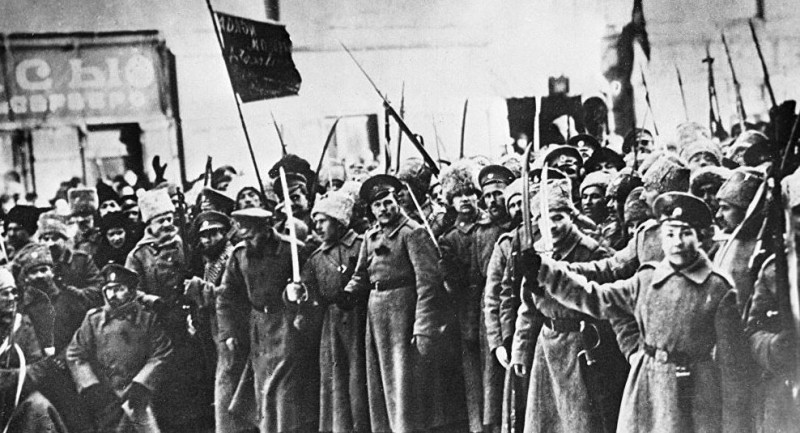
The Bolshevik Revolution in 1917 was a momentous event in world history that ultimately led to the establishment of the Soviet Union. It marked a significant turning point in Russia's political landscape and had far-reaching implications for the global stage. In this article, we will delve into the details of the Bolshevik Revolution, its causes, key players, and the consequences that followed.
Introduction
The Bolshevik Revolution, also known as the October Revolution, took place in 1917 in Russia. It was a pivotal event that resulted in the overthrow of the Provisional Government and the rise of the Bolshevik Party led by Vladimir Lenin. The revolution marked the beginning of a new era in Russian history and set the stage for the formation of the Soviet Union.
The Socio-Political Climate in Russia Before the Revolution
Before the Bolshevik Revolution, Russia was grappling with numerous social, political, and economic challenges. The country was ruled by an autocratic monarchy under Tsar Nicholas II, whose reign was characterized by widespread discontent and inequality. The majority of the population endured harsh living conditions, while a small elite held significant power and wealth.
The Rise of the Bolsheviks
The Bolshevik Party, later renamed the Communist Party, emerged as a radical faction within the broader Russian Social Democratic Labor Party. Led by Vladimir Lenin, the Bolsheviks advocated for a socialist revolution and the establishment of a proletarian state. Their ideology appealed to the working class and disenfranchised masses, who were yearning for change and an end to their suffering.
The February Revolution of 1917
The February Revolution was a spontaneous uprising that erupted in Petrograd (now St. Petersburg) in 1917. It was primarily driven by food shortages, high inflation, and war weariness among the Russian population. The revolution resulted in the abdication of Tsar Nicholas II and the collapse of the monarchy. A provisional government was established, but it failed to address the people's pressing needs and demands.
The October Revolution of 1917
Building on the discontent following the February Revolution, the Bolshevik Party seized the opportunity to stage a second revolution in October 1917. Led by Lenin, the Bolsheviks carried out a carefully orchestrated plan to overthrow the Provisional Government. On October 25th, they stormed the Winter Palace in Petrograd and assumed control of the state apparatus.
The Founding of the Soviet Union
Following the successful revolution, the Bolsheviks worked towards the formation of a new state based on Marxist principles. In December 1922, the Union of Soviet Socialist Republics (USSR) was officially established, consolidating power under the Communist Party. The Soviet Union aimed to build a socialist society, with the means of production collectively owned and controlled by the state.
The Impact of the Bolshevik Revolution
The Bolshevik Revolution had profound implications for Russia and the world at large. Internally, it marked a radical departure from the previous autocratic regime and ushered in a period of socialist experimentation and transformation. Externally, the revolution sparked hopes and fears among different nations, leading to geopolitical realignments and ideological confrontations.
Economic and Social Reforms
Under the new Soviet government, a series of economic and social reforms were implemented. Land was nationalized, industries were nationalized or placed under state control, and efforts were made to redistribute wealth and reduce inequality. The Soviet Union embarked on ambitious programs such as rapid industrialization and collectivization of agriculture, aiming to modernize the country and improve living conditions for the working class.
Consolidation of Power under Lenin
Vladimir Lenin played a central role in consolidating power and shaping the direction of the newly formed Soviet Union. He introduced policies that aimed to strengthen the Communist Party's control over the state, including the establishment of the Red Army, the secret police, and a system of party organization known as democratic centralism. Lenin's leadership laid the groundwork for the one-party rule that characterized the Soviet Union for decades to come.
Opposition and Civil War
The Bolshevik Revolution faced opposition from various groups, including political opponents, former members of the Provisional Government, and foreign powers who feared the spread of communism. These tensions erupted into a bitter civil war that lasted from 1918 to 1922. The Bolsheviks, also known as the Red Army, emerged victorious, solidifying their grip on power and establishing the Soviet Union as a socialist state.
The Legacy of the Bolshevik Revolution
The Bolshevik Revolution left a lasting impact on the world stage. It inspired revolutionary movements in other countries, particularly in the early 20th century. The Soviet Union itself became a global superpower, shaping the geopolitical landscape and engaging in ideological rivalries with the Western world during the Cold War. The revolution's legacy continues to be debated, with contrasting views on its achievements and shortcomings.
Conclusion
The Bolshevik Revolution in 1917 was a watershed moment in history that transformed Russia and led to the birth of the Soviet Union. It brought about radical political, social, and economic changes, impacting not only the Russian population but also the international community. The revolution's repercussions continue to be felt to this day, and its significance as a turning point in modern history cannot be understated.
Manipur Violence: Tribal Leader Forum Regrets Kuki Zo Conflict